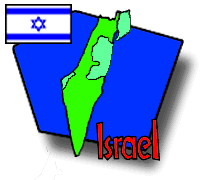Person of the Day: King Herod the Great
Place of the Day: Mount Moriah
Group Dispatch, January 13

- Damascus Gate
 (Sha'ar Shechem [Nablus Gate] and Bab al-Mud [Gate of the Column]), leading east in the direction of Damascus and to East Jerusalem
(Sha'ar Shechem [Nablus Gate] and Bab al-Mud [Gate of the Column]), leading east in the direction of Damascus and to East Jerusalem
- Herod's Gate (Sha'ar HaPerahim and Bab as-Zahra [Flower Gate])
- St. Stephen's Gate (Sha'ar Ha'Arayot [Lions Gate] and Bab al-Ghor [Jordan Gate]), leading to the Mount of Olives
- Golden Gate leading directly to the Temple Mount/Haram ash-Sharif and believed by many Jews to be the gate through which the Messiah will enter the Old City, despite (and probably because of) which it is sealed and has been so for centuries
- Dung Gate (Sha'ar HaAshpot and Bab al-Maghariba [Gate of the Moors]), possibly so called because the city dump was nearby
- Zion Gate (Sha'ar Ziyyon and Bab Haret al-Yahud [Gate of the Jewish Quarter]), which was added to give access to the monuments on Mt. Zion that were reputedly left outside the wall as a cost-cutting measure (and resulted in the beheading of the wall's architects by the order of an incensed Suleiman)
- Jaffa Gate (Sha'ar Yafo and Bab al-Khalil [Gate of the Friend]), which leads in the direction of Jaffa and/or Hebron (Hebron is al-Khalil in Arabic).
- The added eighth gate is the New Gate (Sha'ar HeHadash and Bab al-Jadid), which gives direct access to the sites of the Christian Quarter.
Questions? Ask Ethan ![]() !
!
Return to Fast Facts
 |
 |
 |
 |
 |
|
Itinerary/ Journal |
Discussions |
About Israel |
eDscape Projects |
Scrapbook |
|
|
|
|
|
|
|
Copyright 1997-2004 BikeAbout. All rights reserved.
